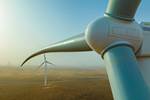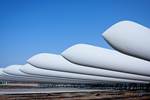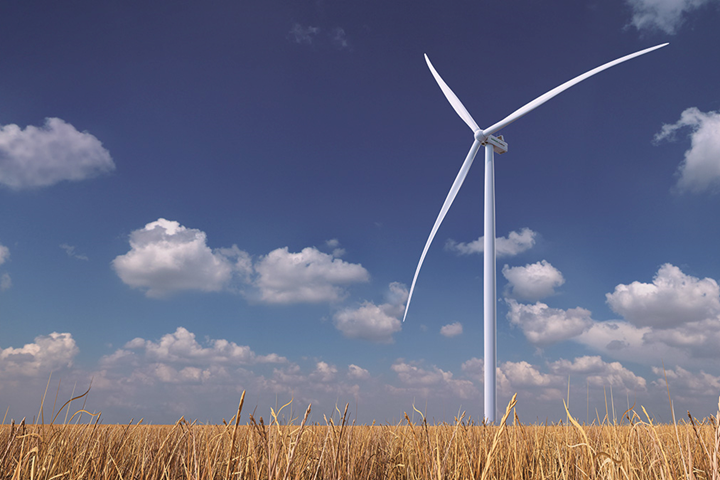Siemens Gamesa 4.4 MW onshore wind turbine targets North American market
The newly launched high-capacity factor SG 4.4-164 is specifically geared toward U.S. wind sites that are targeted to reach commercial operation in 2025.
Photo Credit: Siemens Gamesa North America via Twitter
At this year’s CleanPower conference, Siemens Gamesa Renewable Energy (Zamudio, Spain) launched its SG 4.4-164 high-capacity factor turbine. With a nominal power rating of 4.4 to 4.8 megawatts (MW), the wind turbine has been designed specifically to cater to the needs of the U.S. onshore market.
According to Shannon Sturgil, CEO of onshore North America for Siemens Gamesa, as reported by North America Wind Power, ““With a country as large as the U.S., we took into account the unique challenges of onshore wind sites from coast to coast, including transportation and logistics, varied wind conditions and environments, state-by-state noise, electrical and power delivery requirements, and the applicable IRA incentives.”
The SG 4.4-164 has a swept area of 21,124 square meters and a 164-meter rotor diameter. Its single-piece, fiberglass-reinforced epoxy IntegralBlades with pultruded carbon fiber, boasting a length of 81 meters, are said to be optimized for IEC Class S winds and have enhanced blade aerodynamics designed by SGRE’s blade design team in Boulder, Colorado. Moreover, the company’s DinoTail and DinoShell add-ons are included for enhanced aerodynamics.
SGRE notes that the turbine will meet the domestic content requirements of the Inflation Reduction Act by using the capabilities of the company’s blade facility in Fort Madison, Iowa, and nacelle assembly facility in Hutchinson, Kansas.
Featuring a “design lifetime longer than the industry standard,” Siemens Gamesa says the SG 4.4-164 uses “established and updated platform designs to minimize costs and streamline construction.”
The turbine is currently available to order for projects targeted to reach commercial operation in 2025.
Siemens Gamesa has made other developments in the U.S. including the establishment of an offshore wind nacelle facility in New York.
Related Content
-
JEC World 2023 highlights: Recyclable resins, renewable energy solutions, award-winning automotive
CW technical editor Hannah Mason recaps some of the technology on display at JEC World, including natural, bio-based or recyclable materials solutions, innovative automotive and renewable energy components and more.
-
Composites end markets: Batteries and fuel cells (2024)
As the number of battery and fuel cell electric vehicles (EVs) grows, so do the opportunities for composites in battery enclosures and components for fuel cells.
-
Collins Aerospace to lead COCOLIH2T project
Project for thermoplastic composite liquid hydrogen tanks aims for two demonstrators and TRL 4 by 2025.
















